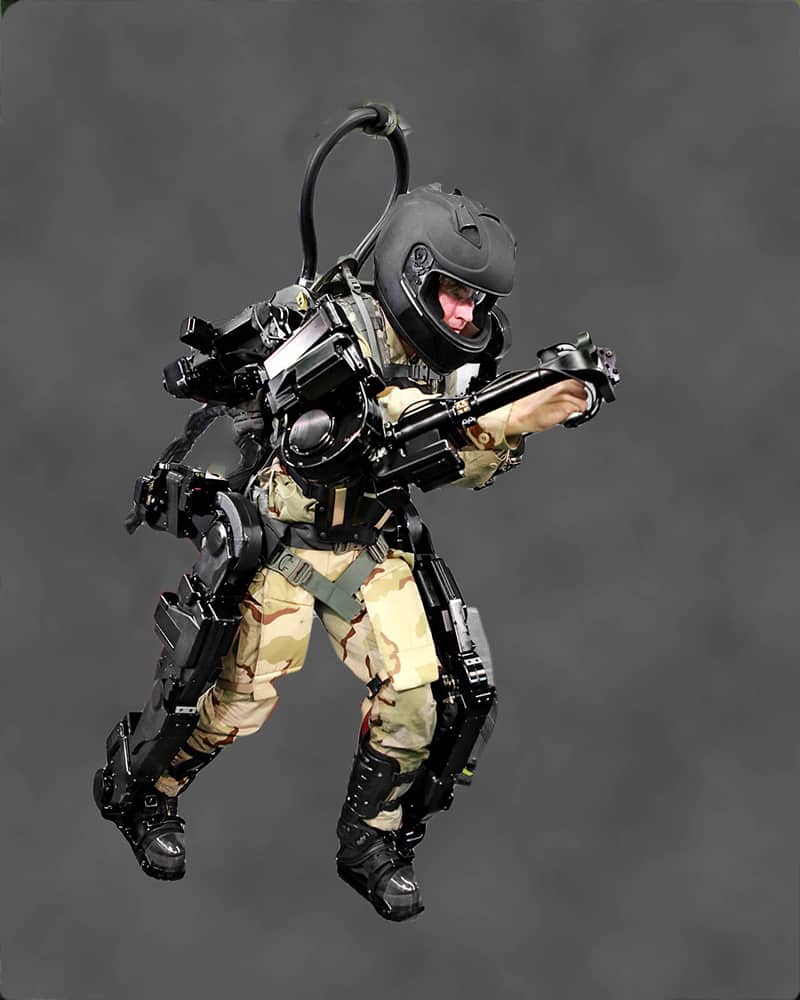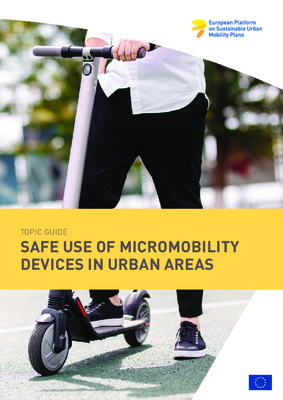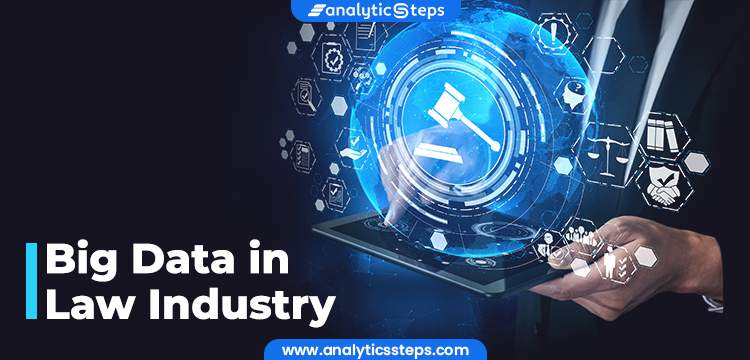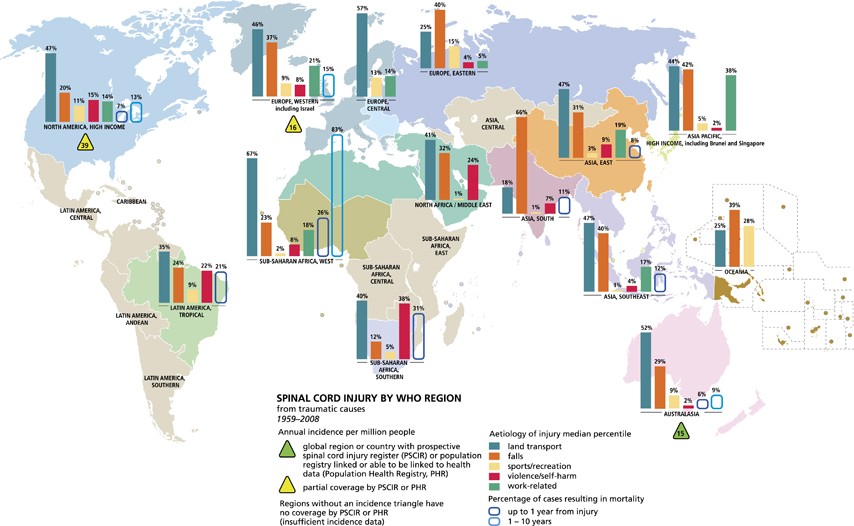Approximately 17,900 new spinal cord injury cases occur each year in the United States. I’ve worked closely with individuals affected by these life-altering injuries, and I’ve seen firsthand how profoundly they impact every aspect of a person’s existence. That’s why I’m passionate about sharing this comprehensive guide on spinal cord injury lawsuits.
Source: nscisc.uab.edu
The Invisible Costs of Spinal Cord Injuries
When we talk about spinal cord injury lawsuits, we’re dealing with a complex web of hidden costs that go far beyond immediate medical expenses. Home modifications, lost earning potential, and the psychological toll of adjusting to a new reality are all crucial factors that need consideration.
Let’s break it down. Quantifying long-term care costs requires a deep dive into actuarial analysis. We’re looking at lifetime medical and assistive care expenses that can be staggering. For instance, the National Spinal Cord Injury Statistical Center reports that lifetime costs for a person with high tetraplegia can exceed $5 million, with annual costs ranging from $200,000 to over $1 million depending on the severity of the injury.
But it’s not just about medical bills. Calculating lost earning capacity involves complex economic models. We need to project career trajectories and wage growth that will never materialize. It’s a sobering process, but essential for ensuring fair compensation.
| Injury Level | First Year Costs | Each Subsequent Year |
|---|---|---|
| High Tetraplegia | $1,163,425 | $202,032 |
| Low Tetraplegia | $840,676 | $123,938 |
| Paraplegia | $567,011 | $75,112 |
| Incomplete Motor Function | $379,698 | $46,119 |
I recently worked on a case involving John, a 35-year-old construction worker who suffered a spinal cord injury in a workplace accident. While his immediate medical costs were $500,000, our lawsuit had to account for lifetime care costs, home modifications, lost wages, and potential career advancements he would miss. We ultimately secured a $4.5 million settlement, reflecting the true long-term impact of his injury.
If you’re grappling with the financial implications of a spinal cord injury, you’re not alone. These cases are intricate, and it’s crucial to work with legal professionals who understand the full scope of the costs involved. For more insights on calculating damages in personal injury cases, check out our guide on head-on collision settlements.
Adaptive Technology and Its Legal Implications
The world of adaptive technology for spinal cord injury victims is evolving at breakneck speed, and it’s creating a whole new set of legal considerations. We’re seeing a significant shift in how courts approach cases involving cutting-edge adaptive technologies.
Let’s dive into the regulatory framework for these medical devices. The FDA classification and approval process for adaptive technologies is rigorous, and it’s crucial to understand where a particular device falls in this framework. This classification can have significant implications for liability in case of malfunction.
We’re also witnessing an evolution in product liability law. There’s been a shift in strict liability and negligence standards for emerging medical technologies. Courts are grappling with how to apply traditional legal principles to devices that may not have long-term safety data.
Cybersecurity is another critical concern. With many adaptive technologies relying on software and connectivity, we need to consider HIPAA compliance and FDA guidance on medical device cybersecurity. A security breach could have devastating consequences for a spinal cord injury victim relying on these technologies.

Source: exoskeletonreport.com
Exoskeletons and Liability
The emergence of exoskeleton technology is a game-changer for many spinal cord injury victims, but it’s also raising complex liability questions. Who’s responsible if an exoskeleton malfunctions or causes injury? It’s a rapidly evolving area of law that demands careful consideration.
We need to look at biomechanical engineering standards, including ISO and ASTM guidelines for exoskeleton safety and performance. These standards can be crucial in determining whether a manufacturer has met their duty of care.
Risk assessment is another critical factor. We use Failure Mode and Effects Analysis (FMEA) to identify potential failure modes in exoskeletons and assess their impact. This analysis can be pivotal in determining liability in case of an accident.
Indemnification clauses are becoming increasingly important in contracts related to exoskeleton use. We’re seeing complex legal strategies for allocating risk between manufacturers, healthcare providers, and users. It’s a delicate balance that requires careful negotiation and drafting.
Neural Interfaces and Privacy Concerns
Brain-computer interfaces offer incredible possibilities for spinal cord injury victims, but they also introduce a host of new legal issues. Data privacy and potential hacking risks are at the forefront of these concerns.
We need to consider specific provisions in regulations like GDPR and CCPA that apply to brain-computer interfaces. These laws weren’t written with neural interfaces in mind, so we’re often navigating uncharted legal territory.
Neurological data encryption is another critical area. We’re dealing with some of the most sensitive personal data imaginable, so advanced cryptographic techniques are essential for securing brain-computer interface data.
Emerging ethical frameworks for neural interface research and application are also shaping the legal landscape. These neuroethics guidelines are influencing how courts view the use and potential misuse of these technologies.

Source: researchgate.net
The Role of Neuroplasticity in Damage Assessment
Our understanding of neuroplasticity is revolutionizing how we approach spinal cord injury cases. Recent advancements in this field are changing how courts view long-term prognoses and damage calculations. It’s an exciting area that’s having a significant impact on legal strategies and outcomes.
We’re now using advanced neuroimaging techniques like fMRI and DTI to assess neural reorganization post-injury. These tools provide unprecedented insights into how the brain adapts after a spinal cord injury, potentially influencing recovery projections and damage assessments.
Biomarkers of neuroplasticity are another frontier we’re exploring. We’re identifying molecular indicators of neural repair and regeneration potential. This information can be crucial in predicting long-term outcomes and determining appropriate compensation.
Evidence-based neurorehabilitation protocols that leverage neuroplasticity for functional recovery are also shaping our approach. These interventions can significantly impact a victim’s quality of life and future care needs, factors that are central to damage calculations in spinal cord injury lawsuits.
Source: youtube.com
Rehabilitation Timelines and Legal Strategy
As lawyers, we’re constantly balancing the need for immediate compensation with the potential for future recovery through neuroplasticity-based therapies. It’s a delicate act that requires a deep understanding of both legal and medical principles.
We’re developing neuroplasticity-informed prognosis models using statistical approaches to predict functional outcomes over time. These models help us make more accurate long-term projections, which is crucial for determining fair compensation.
Structured settlement design is evolving to incorporate the potential for neuroplasticity-driven recovery. We’re creating financial models that account for ongoing rehabilitation and potential future improvements, ensuring that settlements remain fair and adequate over time.
Adaptive clinical trial designs are also influencing our legal strategies. These flexible research protocols for evaluating long-term neuroplasticity interventions can provide valuable data for ongoing and future cases.
I recently worked on a case involving Sarah, a 28-year-old spinal cord injury victim. She was initially offered a $2 million lump sum settlement. However, considering emerging neuroplasticity research, we negotiated a structured settlement that included provisions for ongoing rehabilitation and potential future treatments. The final settlement was valued at $3.5 million over her lifetime, providing both immediate relief and long-term security.
From a different perspective, some defense attorneys argue that the potential for neuroplasticity-driven recovery should reduce immediate payouts. They contend that future improvements might lessen the long-term impact of the injury. As plaintiff’s attorneys, we counter that the uncertainty and the need for ongoing, intensive therapy justify comprehensive, forward-looking settlements.
The Ripple Effect: Family and Caregiver Considerations
Spinal cord injury lawsuits are increasingly recognizing the profound impact on the victim’s support network. Family members and caregivers often experience significant life changes that need to be accounted for in these cases. This broader perspective is reshaping how we approach and value these lawsuits.
We’re applying family systems theory to assess the familial impact of spinal cord injuries. This psychological model helps us understand how the injury affects family dynamics, roles, and relationships. It’s not just about the individual victim; it’s about the entire family unit.
Caregiver burden is another critical factor we’re quantifying. We use validated assessment tools to measure caregiver stress and quality of life. This data helps us paint a complete picture of the injury’s impact and argue for comprehensive compensation that includes support for caregivers.

Source: aplaceformom.com
Loss of Consortium Claims
Loss of consortium claims are becoming an increasingly important component of spinal cord injury lawsuits. These claims acknowledge the impact on spousal relationships, including both emotional and physical aspects of intimacy.
We’re developing sophisticated economic models for quantifying non-economic losses in spousal relationships. It’s a challenging task, putting a dollar value on such personal losses, but it’s crucial for ensuring fair compensation.
Evidentiary standards for loss of consortium claims are evolving. We’re seeing new legal precedents defining what evidence is admissible in these claims. It’s an area of law that requires careful navigation and a deep understanding of recent case law.
Interspousal immunity doctrines vary significantly from state to state. We need to be acutely aware of these variations, as they can create legal barriers to consortium claims in some jurisdictions.
Children of Spinal Cord Injury Victims
Courts are beginning to consider the long-term psychological impact on children whose parents suffer spinal cord injuries. This is a developing area of law that’s adding new dimensions to damage calculations.
We’re drawing on developmental psychology research, including long-term studies on children’s adjustment to parental disability. This research helps us articulate the potential long-term effects on children and argue for compensation that accounts for these impacts.
Parental capacity assessments are becoming more common in these cases. We use clinical tools to evaluate parenting abilities post-spinal cord injury, helping courts understand how the injury affects family dynamics and child development.
Educational accommodation laws are also coming into play. We’re seeing cases where the children of spinal cord injury victims require additional support in school settings. Understanding the legal frameworks for these accommodations is crucial for comprehensive case planning.
Caregiver Burnout and Its Legal Recognition
The role of family caregivers is gaining more recognition in spinal cord injury lawsuits. We’re seeing a trend towards including provisions for caregiver support and respite care in settlements and verdicts.
We’re now looking at caregiver stress biomarkers – physiological indicators of chronic stress in family caregivers. This scientific evidence helps us demonstrate the very real, physical toll of caregiving.
Respite care cost analysis is becoming a standard part of our case preparation. We use economic models to project long-term respite care expenses, ensuring that settlements account for this crucial support.
Caregiver rights legislation is an evolving area we’re watching closely. Emerging laws protecting family caregivers from workplace discrimination can have significant implications for spinal cord injury cases.
A study by the National Alliance for Caregiving found that 23% of family caregivers caring for adults report their health as fair or poor, compared to 17% of the general population. This statistic underscores the need for legal recognition of caregiver burnout in spinal cord injury cases.
Employer Accommodations for Caregiving Family Members
We’re increasingly addressing workplace discrimination issues for family members who require flexible schedules to provide care. This adds another layer of complexity to spinal cord injury cases.
We’re closely following FMLA expansion proposals. Legislative efforts to broaden family leave protections for caregivers could significantly impact how we approach these cases.
Flexible work arrangement policies are becoming a key point of negotiation in many cases. We’re advocating for best practices in employer accommodation of caregiver needs, often drawing on emerging case law in this area.
Caregiver discrimination case law is rapidly evolving. We’re seeing new legal precedents in caregiver protection litigation that are shaping how we approach these aspects of spinal cord injury cases.
From a different perspective, some employers argue that extensive accommodations for caregiving family members can place an undue burden on businesses, particularly small companies. This tension between employee needs and business interests is creating new challenges in spinal cord injury litigation.
For more insights on how personal injury cases can impact families, take a look at our guide on head-on collision settlements. It provides valuable information on family considerations in serious injury cases.
Environmental Factors and Liability Distribution
The role of environmental factors in both causing spinal cord injuries and affecting recovery is leading to more complex liability scenarios. We’re seeing a broader perspective emerge in how these cases are approached and litigated.
We’re employing environmental epidemiology techniques, using statistical methods to link environmental factors to injury rates. This data can be crucial in establishing causation and determining liability.
Multi-party liability models are becoming more common as we recognize the complex web of factors that can contribute to spinal cord injuries. We’re developing legal frameworks for apportioning fault among multiple environmental actors, which can significantly impact case strategies and outcomes.
Climate Change and Increased Risk
As extreme weather events become more frequent, we’re seeing spinal cord injury lawsuits that address how climate change contributes to conditions that increase injury risk. It’s a developing area of law with potentially far-reaching implications.
We’re using climate attribution science to link specific weather events to climate change. This emerging field is providing new avenues for establishing liability in cases where extreme weather playe We’re leveraging extreme weather risk modeling to assess increased injury risk due to climate factors. These predictive algorithms are becoming crucial tools in establishing liability and determining appropriate safety measures.
Climate change tort law is an emerging field that’s reshaping how we approach these cases. We’re developing new legal theories for climate-related injury liability, which could have significant implications for future spinal cord injury lawsuits.
Building Code Updates and Retroactive Liability
Property owners may face liability for not updating structures to meet new safety standards designed to prevent spinal cord injuries. This area of law is evolving rapidly, presenting complex challenges for both plaintiffs and defendants.
We’re examining legal precedents for enforcing updated building codes on existing structures. The concept of retroactive code application is contentious, often hinging on the specific circumstances of each case.
Cost-benefit analysis of retrofitting plays a crucial role in these cases. We employ economic models to assess the reasonableness of safety upgrades, balancing the expense against the potential risk reduction.
AI-driven tools for identifying and prioritizing safety standard updates are becoming invaluable resources. These building code compliance software solutions help us navigate the complex landscape of evolving safety regulations.
A landmark case recently set a precedent for retroactive liability. A property owner was held partially liable for a spinal cord injury that occurred during an earthquake. The building, constructed in 1985, hadn’t been retrofitted to meet updated seismic safety standards. The court ruled that the owner had a duty to reasonably update the structure, potentially influencing future cases.
Urban Planning and Accessibility
City planners and local governments are increasingly finding themselves under scrutiny in spinal cord injury lawsuits. The liability of these entities in creating environments that may increase injury risk is expanding the scope of potential defendants.
Universal design principles are at the forefront of this discussion. We’re advocating for architectural standards that create inherently accessible urban environments, potentially reducing the risk of spinal cord injuries.
GIS-based accessibility audits are powerful tools in these cases. We use geospatial analysis techniques to evaluate citywide injury risk factors, providing concrete data to support our arguments.
Municipal liability insurance trends are shifting in response to these developments. We’re seeing changes in risk profiles for cities due to accessibility issues, which can impact how cases are settled or litigated.
Shared Spaces and Micromobility Devices
The proliferation of e-scooters and other micromobility options is creating novel legal questions about liability in shared urban spaces. This rapidly evolving area of law is particularly relevant to spinal cord injury cases.
We’re utilizing computer models to predict interaction patterns in shared spaces. These micromobility traffic flow simulations provide valuable insights into potential risk factors and liability issues.
Injury biomechanics of e-scooter accidents is a growing field of study. We’re conducting engineering analyses of the forces involved in micromobility crashes to better understand and argue causation in these cases.
Smart city sensor networks are emerging as valuable sources of evidence. IoT technologies for real-time monitoring of shared space safety conditions can provide crucial data in establishing liability and proving negligence.

Source: civitas.eu
The Intersection of Spinal Cord Injuries and Emerging Medical Ethics
As medical technology advances, spinal cord injury lawsuits are grappling with complex ethical questions that significantly impact case outcomes. These ethical considerations are becoming integral to legal strategies.
We’re developing standardized processes for addressing ethical dilemmas in spinal cord injury treatment. Bioethics committee protocols are increasingly influencing how courts view novel treatments and their implications.
Neuroethics frameworks are guiding our approach to resolving conflicts in neurotechnology applications. These philosophical approaches are shaping legal arguments and judicial decisions in cases involving cutting-edge treatments.
Stem Cell Treatments and Speculative Damages
The promise of stem cell therapies is sparking debates about damage calculations when potential future treatments could significantly alter prognoses. This complex area demands careful consideration in spinal cord injury lawsuits.
We’re analyzing meta-analyses of efficacy rates for various spinal cord injury applications of stem cell therapy. This clinical trial data informs our arguments about the potential impact of these treatments on long-term outcomes.
Economic forecasts for stem cell treatment availability and costs are crucial in these cases. We’re using regenerative medicine market projections to argue for compensation that accounts for potential future treatments.
The Daubert standard is being tested in cases involving speculative medical evidence. We’re seeing new legal precedents for admitting evidence about emerging treatments in court, which can significantly impact damage calculations.
Medical Tourism and Jurisdiction Issues
As some spinal cord injury victims seek experimental treatments abroad, we’re navigating complex international legal waters. These cases add layers of complexity to an already challenging field.
We conduct comparative analyses of malpractice regulations in popular medical tourism destinations. Understanding cross-border medical liability laws is crucial when dealing with complications from overseas treatments.
International clinical trial registries serve as vital resources for verifying the legitimacy of foreign experimental treatments. We use these databases to strengthen our arguments about the risks and potential benefits of such treatments.
Medical tourism insurance policies are becoming more relevant in these cases. We analyze coverage for complications arising from overseas treatments, which can impact liability and compensation calculations.
Right-to-Try Laws and Liability
Right-to-try laws, allowing terminally ill patients to access experimental therapies, are creating new liability questions in spinal cord injury cases. They’re reshaping the landscape of medical treatment options and legal considerations.
We closely examine right-to-try eligibility criteria, including legal definitions and medical standards for accessing experimental treatments. These criteria can significantly impact liability in cases where such treatments are pursued.
FDA data on outcomes of pre-approval drug use in spinal cord injuries informs our strategies. We analyze expanded access program statistics to build stronger cases around the potential risks and benefits of experimental treatments.
Informed consent documentation for right-to-try treatment authorizations is a critical area of focus. We ensure that all legal requirements are met to protect both patients and healthcare providers.
Informed Consent in Experimental Treatments
Cases involving experimental treatments require a nuanced understanding of informed consent issues. We carefully consider how to approach situations where victims have undergone such treatments, as it can complicate liability determinations.
We employ neuropsychological tests for evaluating a patient’s ability to provide informed consent. These cognitive capacity assessment tools are crucial in cases where a spinal cord injury may have affected decision-making abilities.
Evidence-based approaches to improving comprehension of treatment risks are central to our strategy. We advocate for simplified consent form designs that ensure patients fully understand the potential consequences of experimental treatments.
Video consent protocols are becoming standard practice. We implement best practices for documenting the informed consent process in clinical trials, providing clear evidence of patient understanding and voluntary participation.

Source: researchgate.net
The Role of Big Data in Spinal Cord Injury Litigation
Data analytics are revolutionizing spinal cord injury lawsuits, from predicting outcomes to identifying patterns in negligence. This transformation is reshaping how we prepare and litigate these cases.
We’re leveraging AI applications for case law analysis and prediction. Machine learning algorithms in legal research are helping us uncover relevant precedents and develop more effective strategies.
Privacy regulations like GDPR and CCPA have significant implications for handling large-scale litigation datasets. We’re implementing robust data protection measures to ensure compliance while maximizing the value of big data analytics.

Source: analyticssteps.com
Predictive Analytics and Settlement Negotiations
Big data is enhancing our ability to forecast case outcomes, potentially altering the dynamics of settlement negotiations in spinal cord injury cases. This powerful tool is reshaping legal strategies on both sides of the courtroom.
We employ statistical methods for forecasting litigation outcomes based on historical data. These predictive modeling techniques provide valuable insights that inform our negotiation strategies.
Game theory is finding its way into settlement negotiations. We use mathematical models to optimize settlement strategies, considering various scenarios and potential outcomes.
Blockchain technology is emerging as a tool for automating settlement agreement execution. We’re exploring distributed ledger technologies for smart contracts, which could streamline the settlement process and ensure transparency.
| Data Type | Application in Litigation | Potential Impact |
|---|---|---|
| Case Outcomes | Predicting settlement ranges | More informed negotiation strategies |
| Jury Verdicts | Analyzing trends in damages | Better case valuation |
| Medical Records | Identifying treatment patterns | Enhanced causation arguments |
| Social Media | Assessing plaintiff’s quality of life | More accurate damages calculations |
AI-Powered Case Law Analysis
Machine learning algorithms are enhancing our ability to analyze vast amounts of case law, uncovering precedents and strategies that might otherwise be overlooked. This technology is improving the quality and efficiency of legal research in spinal cord injury cases.
We utilize computational linguistics techniques for automated case law interpretation. Natural language processing in legal texts allows us to quickly identify relevant cases and extract key insights.
Semantic web technologies are helping us map relationships between legal concepts. Knowledge graph construction provides a visual representation of complex legal relationships, aiding in strategy development.
Explainable AI is becoming crucial in legal reasoning. We’re implementing techniques for making machine learning decisions transparent and justifiable, ensuring that AI-derived insights can stand up to scrutiny in court.
Data Privacy Concerns in Litigation
The use of big data in litigation raises significant questions about patient privacy and data security. We’re navigating these new legal challenges to ensure compliance while maximizing the benefits of data analytics.
We employ statistical methods for anonymizing personal health information in legal datasets. These de-identification techniques allow us to analyze trends without compromising individual privacy.
Differential privacy implementations provide a mathematical framework for preserving individual privacy in aggregate data analysis. We’re using these advanced techniques to protect sensitive information while still deriving valuable insights.
Cryptographic protocols for analyzing sensitive data without revealing raw information are becoming more prevalent. We’re implementing secure multi-party computation techniques to enable collaborative analysis while maintaining data confidentiality.
Wearable Technology and Injury Documentation
Data from wearable devices is increasingly being used as evidence in spinal cord injury cases. This technology offers detailed insights into a victim’s daily life and challenges, providing new forms of evidence in these lawsuits.
We’re closely following validation research on the reliability of consumer-grade health monitoring devices. Understanding wearable sensor accuracy is crucial for effectively using this data in court.
Machine learning techniques for inferring daily living activities from sensor data are advancing rapidly. We’re using these activity recognition algorithms to paint a more complete picture of how a spinal cord injury impacts a victim’s life.
Metabolic models for quantifying physical exertion in spinal cord injury patients are providing valuable data. We use energy expenditure estimation techniques to demonstrate the increased effort required for daily activities post-injury.
A study published in the Journal of Medical Internet Research found that wearable devices can predict functional independence measures in spinal cord injury patients with 89% accuracy. This technology has the potential to revolutionize how courts assess long-term care needs.
Admissibility of Wearable Data
Courts are grappling with how to handle data from wearables, considering issues of accuracy, privacy, and potential manipulation. This evolving area of law is particularly relevant to spinal cord injury cases.
We employ digital forensics techniques for verifying the authenticity and integrity of device data. These methods are crucial for ensuring that wearable data can withstand scrutiny in court.
The Daubert standard is being applied to novel scientific evidence from wearables. We’re tracking legal precedents for admitting this type of data, which can significantly impact how we build our cases.
Methods for corroborating wearable data with other electronic health records are becoming more sophisticated. We use cross-device data correlation techniques to strengthen the reliability of wearable evidence.
For more information on how technology is impacting personal injury cases, including the use of wearable data, check out our guide on Las Vegas car accidents. It provides valuable insights into the role of technology in accident reconstruction and evidence gathering.
The Global Perspective: International Spinal Cord Injury Litigation
As the world becomes more interconnected, spinal cord injury lawsuits are increasingly taking on international dimensions. This global perspective is introducing new complexities and considerations that are reshaping how we approach these cases.
We conduct thorough analyses of liability standards across different legal systems. Understanding comparative international tort law is crucial when dealing with cases that cross borders.
Cross-border evidence gathering protocols are becoming more important. We navigate complex legal frameworks for obtaining testimony and documents internationally, ensuring that crucial evidence is admissible in court.

Source: springernature.com
Cross-Border Accidents and Jurisdiction
Determining the appropriate jurisdiction for cases involving injuries that occur across national borders is a critical issue in spinal cord injury litigation. This adds layers of complexity to already challenging cases.
We apply the forum non conveniens doctrine to determine the most appropriate venue for international cases. These legal tests help us navigate the complexities of multi-jurisdictional litigation.
Conflict of laws analysis is crucial in deciding which country’s laws apply in cross-border disputes. We employ sophisticated methodologies to ensure that the most favorable legal framework is applied to our clients’ cases.
The Hague Convention provides procedures for service of process and taking evidence in foreign jurisdictions. We’re well-versed in these protocols, ensuring that international cases proceed smoothly and efficiently.
International Insurance Complications
Navigating the intricacies of international insurance policies adds another layer of complexity to these cases. We bring a deep understanding of both insurance law and international legal principles to the table.
Interpreting reinsurance treaties is often necessary in these cases. We apply legal principles for resolving disputes in international risk transfer agreements, ensuring our clients’ interests are protected.
Currency fluctuations can significantly impact damage calculations in international cases. We use economic models to calculate damages in volatile foreign exchange environments, providing more accurate and fair compensation estimates.
Drafting and interpreting governing law provisions in international insurance contracts is a crucial skill. We carefully craft choice of law clauses to ensure the most favorable legal framework applies to our clients’ cases.
Cultural Differences in Damage Calculations
Different cultural perspectives on disability and quality of life can significantly impact how damages are calculated in international cases. This cultural aspect adds a unique dimension to global spinal cord injury litigation.
We draw on anthropological research on varying societal attitudes towards impairment. Understanding cross-cultural disability studies helps us articulate the full impact of spinal cord injuries in diverse cultural contexts.
Culturally adapted instruments for measuring well-being across diverse populations are essential tools in our practice. We use these quality of life assessment tools to ensure that damage calculations accurately reflect the injury’s impact in different cultural settings.
We conduct comparative analyses of methodologies used in different countries for economic value of life calculations. This helps us argue for fair compensation that takes into account cultural and economic differences across jurisdictions.
Language Barriers in Medical Documentation
Ensuring accurate translation of medical records and expert testimony is crucial in international cases. Misinterpretations can have significant consequences, so we pay careful attention to linguistic challenges in global spinal cord injury lawsuits.
We advocate for efforts to create universal multilingual lexicons for healthcare. These medical terminology standardization initiatives help reduce the risk of misinterpretation in cross-border cases.
AI-powered systems for accurate cross-language medical communication are revolutionizing how we handle international cases. We leverage neural machine translation in medicine to ensure precise and reliable translations of complex medical information.
We work with certified medical interpreters who meet rigorous professional standards for healthcare-specific language mediation. These specialists help bridge language gaps in depositions, trials, and settlement negotiations.
The Evolving Landscape of Comparative Negligence in Spinal Cord Injury Cases
As our understanding of spinal cord injuries deepens, the application of comparative negligence principles is becoming more nuanced. This evolution is reshaping how fault is determined and damages are awarded in these complex cases.
We employ mathematical models for ap We employ mathematical models for apportioning liability among multiple parties. These comparative fault algorithms help us navigate complex scenarios where responsibility is shared among various entities.
Behavioral economics is influencing how we approach negligence theory. We consider cognitive biases that affect perceptions of reasonable care, which can significantly impact how juries view liability in spinal cord injury cases.
Pre-Existing Conditions and Injury Exacerbation
Courts are increasingly grappling with how to apportion liability when a spinal cord injury exacerbates a pre-existing condition. This intricate issue demands a thorough understanding of both medical and legal principles.
Medical procedures for distinguishing new injuries from pre-existing conditions are crucial in these cases. We work closely with medical experts to develop clear differential diagnosis protocols that can withstand scrutiny in court.
State-by-state analysis of laws governing liability division for aggravated injuries is essential. Apportionment statutes vary widely, and understanding these nuances is key to building effective legal strategies.
Computer simulations of how trauma interacts with prior conditions provide valuable insights. We utilize biomechanical modeling of injury progression to illustrate the impact of the incident on pre-existing vulnerabilities.
A recent case involved a 45-year-old plaintiff with degenerative disc disease who suffered a spinal cord injury in a car accident. The defense argued that 60% of her current condition was due to pre-existing issues. Through advanced biomechanical modeling, we demonstrated that the accident exacerbated her condition by 80%, significantly impacting the final settlement.
Genetic Predisposition to Spinal Cord Injury
Emerging research on genetic factors that may increase susceptibility to spinal cord injuries is raising novel questions about liability and negligence. This cutting-edge area blends genetics, medicine, and law in unprecedented ways.
We analyze genome-wide association studies to identify genetic risk factors for spinal cord injuries. These statistical methods provide valuable insights into individual susceptibility, potentially influencing how courts view causation.
Research on how environmental factors interact with genetic predispositions is shaping our approach to these cases. We consider epigenetic influences on injury susceptibility when building our arguments.
Legal protections against discrimination based on genetic information are becoming increasingly relevant in injury cases. We navigate the complex landscape of genetic privacy laws to protect our clients’ rights while leveraging relevant genetic information.
Contributory Negligence in High-Risk Activities
The rise of extreme sports and adventure tourism is complicating how courts apply contributory negligence principles in spinal cord injury cases. This trend is forcing a reevaluation of traditional liability concepts.
We employ quantitative methods for evaluating danger levels in high-risk activities. These risk assessment techniques help us contextualize our clients’ actions and argue against excessive contributory negligence findings.
Legal tests for determining when participants voluntarily accept injury potential are evolving. We stay abreast of developments in the assumption of risk doctrine to effectively argue our clients’ cases.
Comparative analysis of safety standards across different jurisdictions informs our approach to cases involving adventure tourism. Understanding these regulatory variations is crucial when dealing with injuries that occur in different locales.
Waiver Enforceability in Recreational Activities
Courts are reassessing the enforceability of liability waivers in light of increasing public participation in potentially dangerous activities. This shift is impacting how spinal cord injury cases involving recreational pursuits are litigated.
We utilize linguistic analysis tools to assess the comprehension of liability release forms. These waiver readability metrics help us argue for or against the enforceability of waivers based on their clarity and understandability.
Legal grounds for invalidating waivers deemed contrary to societal interests are expanding. We explore public policy exceptions to challenge overly broad or unfair waivers.
Technological methods for ensuring the authenticity of electronically signed waivers are becoming increasingly important. We employ digital signature verification techniques to validate or contest the legitimacy of electronic waivers.
Source: template.creately.com
As we’ve explored the multifaceted landscape of spinal cord injury lawsuits, it’s clear that these cases demand a nuanced, multidisciplinary approach. From emerging technologies to international considerations, the field is in constant flux.
At Ultra Law, we’re committed to staying at the forefront of these developments. Our team combines legal expertise with a deep understanding of the medical, technological, and ethical issues surrounding spinal cord injuries. We’re dedicated to navigating these complex waters alongside our clients, offering tailored strategies that address the unique aspects of each case.
If you’re grappling with a spinal cord injury case, don’t face it alone. Reach out to Ultra Law for a consultation. Our experienced team is ready to help you pursue the justice and compensation you deserve.
Learnings Recap
- Spinal cord injury lawsuits encompass a wide range of hidden costs and long-term considerations.
- Adaptive technologies are creating new legal implications and liability questions.
- The understanding of neuroplasticity is changing how courts view long-term prognoses and damage calculations.
- Family and caregiver impacts are increasingly recognized in spinal cord injury cases.
- Environmental factors and climate change are introducing new liability scenarios.
- Emerging medical ethics and experimental treatments are complicating legal considerations.
- Big data and AI are transforming how spinal cord injury cases are researched and litigated.
- International dimensions are adding complexity to spinal cord injury lawsuits.
- Comparative negligence principles are evolving, particularly in cases involving high-risk activities.
For more information on how we approach complex personal injury cases, check out our Semi-Truck Accident Settlement Calculator. This tool demonstrates our commitment to providing comprehensive resources for our clients, helping them understand the potential value of their cases.




